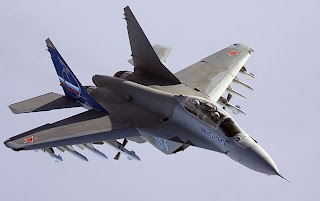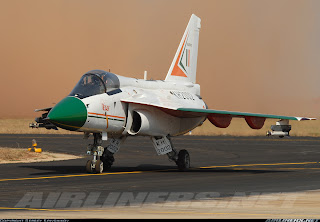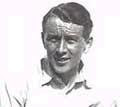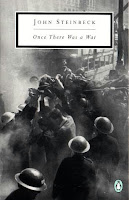MRCA Tender- RFP cleared for Release
MRCA Contract Update- June 29 Over the past week, theres been a flurry of activity on the MRCA scene. Last week, AK Antony said that the Defence Acquisition Committee (DAC) would meet and approve the Request for Proposal (RFP) for release within the fortnight. That report was on the 18th. Luckily, the DAC met the deadline. Yesterday, the DAC met in Delhi and cleared the purchase of the 126 fighter jets.
Over the past week, theres been a flurry of activity on the MRCA scene. Last week, AK Antony said that the Defence Acquisition Committee (DAC) would meet and approve the Request for Proposal (RFP) for release within the fortnight. That report was on the 18th. Luckily, the DAC met the deadline. Yesterday, the DAC met in Delhi and cleared the purchase of the 126 fighter jets.
The big news was reported by various newspapers. Unfortunately, its hard to trust most of these reporters (for reasons well known), and so, an official MoD source was needed. That press release is given below.
An Analysis of this news is on the way. The press release by itself is quite detailed, and a lot can be inferred from it. The most important observation is the name "Medium Multi Role Combat Aircraft", which suggests that the IAF is no longer looking for a Mig-21 replacement, but is looking to boost the number of medium weight class (Max. Takeoff Wt. of 20-25 tons) aircraft, which do the bulk of "Earth-mover" work in strike roles. That is, in any mission, these aircraft would be the bomb carriers and the core of the formation, while other aircraft, like the LCA and Su-30 would provide air cover. This class, capable of carrying over 6 tons of weapons (9-10 tons
of load, i.e. Weapons + Fuel), is crucial for the IAF, which has been looking to shore up the numbers and replace the Mig-27s and Jaguars that are getting old.
This also means that the MoD is no longer worried about the progress of the LCA project. Reports before would regularly talk about the MRCA being floated due to delays in the LCA project. But, considering the progress of the Tejas, that doesn't seem to be a worry any more.
The MoD Press Release:
http://pib.nic.in/release/release.asp?relid=28894
DEFENCE ACQUISITION COUNCIL CLEARS PROCUREMENT 126 MMRCA
The Defence Acquisition Council (DAC) headed by the Defence Minister Shri AK Antony has cleared the process for the procurement of 126 Medium Multi Role Combat Aircraft (MMRCA) for the Indian Air Force. During its meeting here today, the DAC debated various issues related to the initial purchase, transfer of technology, licensed production and life time maintenance support for the 126 MMRCA and gave the final go-ahead for the project.
In pursuant to the recent assurance given by the Defence Minister for an early issue of the much awaited Request for Proposal (RFP) for the 126 fighter jets, the Ministry of Defence and Indian Air Force officers have been working overtime to scrutinize all aspects of the RFP. In view of the size and operational importance of the likely purchase, the criteria for selecting the final MMRCA contender from amongst some of the best combat aircraft offered by American, Russian and European companies, has been fine tuned. The RFP would contain a selection model that would involve an exhaustive evaluation process as detailed in the Defence Procurement Procedures — 2006.
The proposals from the likely contenders would first be technically evaluated by a professional team to check for compliance with IAF’s operational requirements and other RFP conditions. Extensive field trials would be carried out to evaluate the performance. Finally, the commercial proposal of the vendors, short-listed after technical and field evaluations, would be examined and compared. The aircraft are likely to be in service for over 40 years. The vendors are required to provide a life time support and performance based warranty for the aircraft. MoD officials have confirmed that great care has been taken to ensure that only determinable factors, which do not lend themselves to any subjectivity, are included in the commercial selection model. The selection would be transparent and fair.
The DAC has approved that a majority of the MMRCA would be produced in India under transfer of technology. The vendor finally selected would also b e required to undertake offset obligations in India. It is expected that the ToT and offset contracts would provide a great technological and economic boost to the indigenous defence industries, which would include DPSUs, RURs and other eligible private sector industries. Foreign vendors would be provided great flexibility in effecting tie-up with Indian partners, for this purpose.
There are three guiding principles for this procurement scheme. First, the operational requirements of IAF should be fully met. Second, the selection process should be competitive, fair and transparent, so that best value for money is realized. Lastly, Indian defence industries should get an opportunity to grow to global scales.
With the decks finally cleared, the RFP is planned to be issued in the near future.
Sitanshu Kar
An earlier report by the Indian Express, dated 18th June is given below.
http://www.indianexpress.com/story/33998.html
PANEL MEET SOON TO DECIDE ON IAF’S 126 FIGHTERS CONTRACT
“The DAC will meet within a fortnight and decide on the RFP. All negotiations are over and now it is a question of formalities,” the Minister told media persons after inaugurating a two-day annual Unified Commander’s Conference.
He indicated that issues like factoring in life-cycle costs and clauses of the offset policy have been resolved by saying that the final Request for Proposals would be issued within “one or two months”.
Meanwhile, Air Chief Marshal F H Homi left on Monday for a five-day
Speaking on the LTTE threat, ... (unrelated issues continued).
More Reports:
(note- links shown here may have been shortened. If you're not able to see, right click and copy link location.)
http://www.hindu.com/2007/06/29/stories/2007062954320900.htm
http://www.indiaprwire.com/businessnews/20070628/23165.htm
http://www.ndtv.com/convergence/ndtv/story.aspx
http://economictimes.indiatimes.com/India_to_buy_126_fighter_jets
CNN Money Report
International Herald Tribune Report
http://www.earthtimes.org/articles/show/77788.html
For more reports, see Google News. A Collection of reports like the ones above can be found here.







